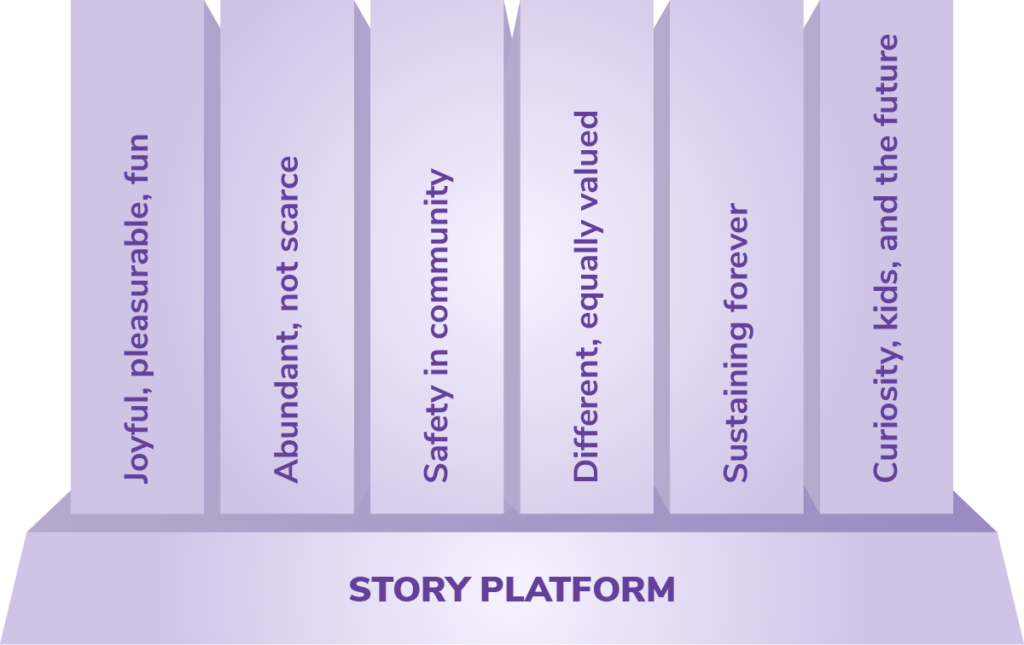Our goal is to help create a gender-just world. To define what that actually means, we looked to the broad coalition of leaders, organizers, activists, and artists working day to day on the frontlines of the movement to advance gender justice. They joined us through in-depth interviews and group workshops and co-created a vivid vision of how our society will work and how we all will live together when gender justice prevails.
What resulted is our core narrative—what we call a “story platform”—that will connect with our audiences and bring them together.
A story platform is not a line of ad copy, not a tagline, and not a slogan. It is different from a one-size-fits-all “message.” It is a narrative plotline that can form the basis for many effective stories, joining up all the stories told by the movement and ensuring they all are deeply emotionally resonant for the audience. The story platform functions as a set of creative guidelines to aid creators in telling myriad stories that all ladder back to the same underlying emotional core and land with cumulative impact.
Seventy-seven artists, advocates, and culture changers concluded that the most powerful, compelling, and unifying story platform for advancing gender justice is the joyful story of the new culture we will create in a gender-just society. This is the emotionally connecting narrative that tells all potential supporters what gender justice means for them personally and why they should support it.
Our Story Platform
This is our story platform—the core narrative that will help us change the culture and achieve gender justice:

Pillars of the Story Platform: Where to Look for Stories to Tell
The pillars grow out of the story platform to support particular areas of storytelling. They rise from the strategic understructure to connect the story platform with actual stories. They are the bridge between strategy and tactics, between meta-narrative and real storytelling. This is why the pillars also are called “rich storytelling areas”—because the pillars show activists and artists where to look for the different kinds of stories we need to tell to different audience segments at different moments to create the change we seek to create over time.

The Story Pillars
Joyful, pleasurable, fun
Stories that reflect the joys of life—being free to create your own identity, enjoy love with partners, belonging, creating, family-making, solitude, acceptance, giving, receiving, nature, beauty, and on and on.
Abundant, not scarce
Stories of economic equity and how to ensure that all people can make a good living and no one has to feel their gain must mean someone else’s loss, their survival must mean someone else’s starvation.
Safety in community
Stories of belonging—building and organizing strong, safe communities, families, and in-groups. How safe spaces make people freer to be themselves. How safety is created and increased in community. Stories of small and big victories.
Different, equally valued
Personal stories to explore all kinds of human difference and how being human means being different from others while all hold equal value. Stories of the right to privacy and respect for personal choices. Stories of how we treat others as we want to be treated.
Sustaining forever
Stories of the balancing act needed to sustain life, society, the planet—balance between what’s good for me and for the world, between tradition and change, and so on.
Curiosity, kids, and the future
Stories of the future people want and the world children will grow up in. How parents raise kids to be happy, healthy and unique, with strong values. How curiosity helps people create identity.